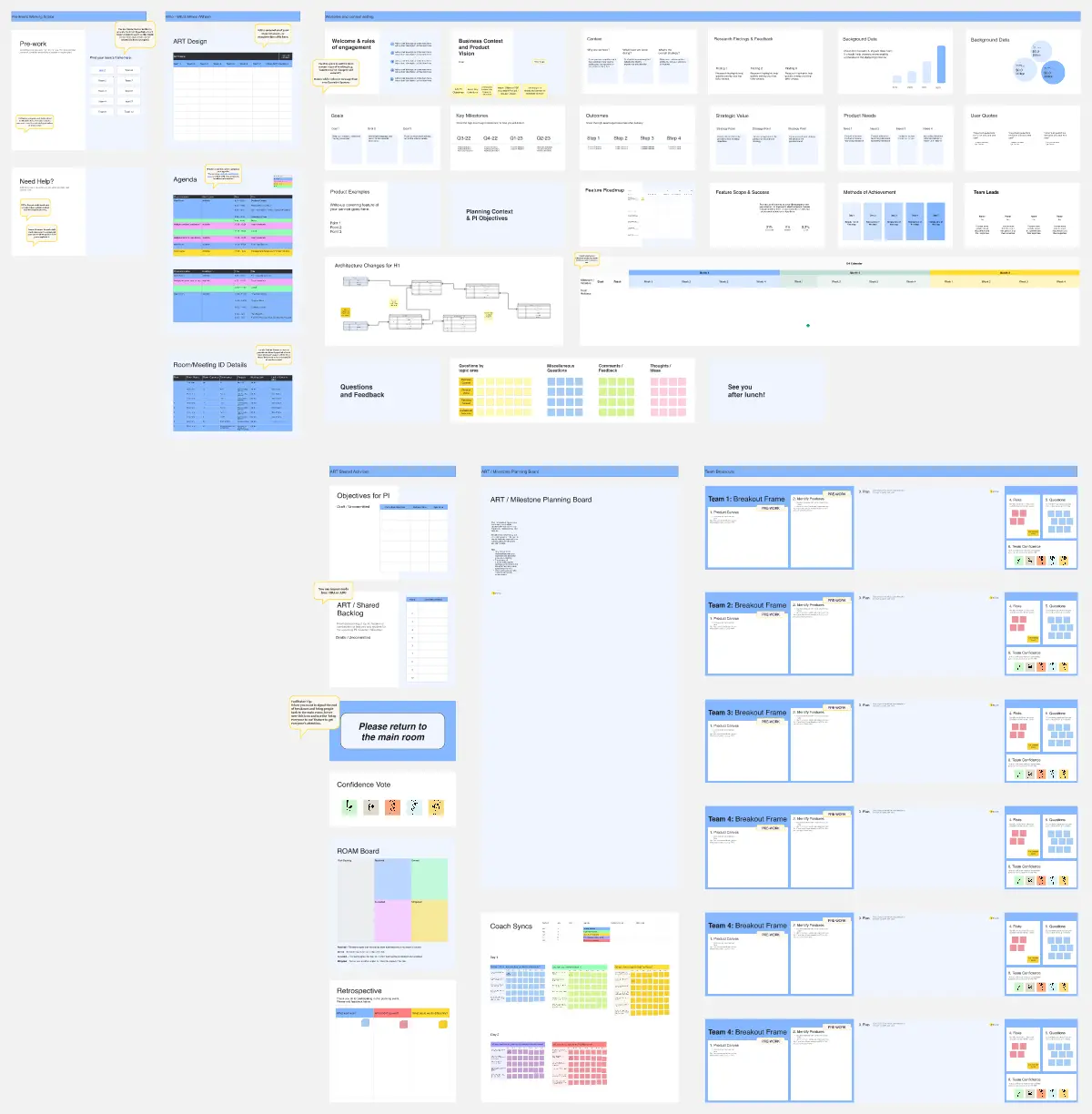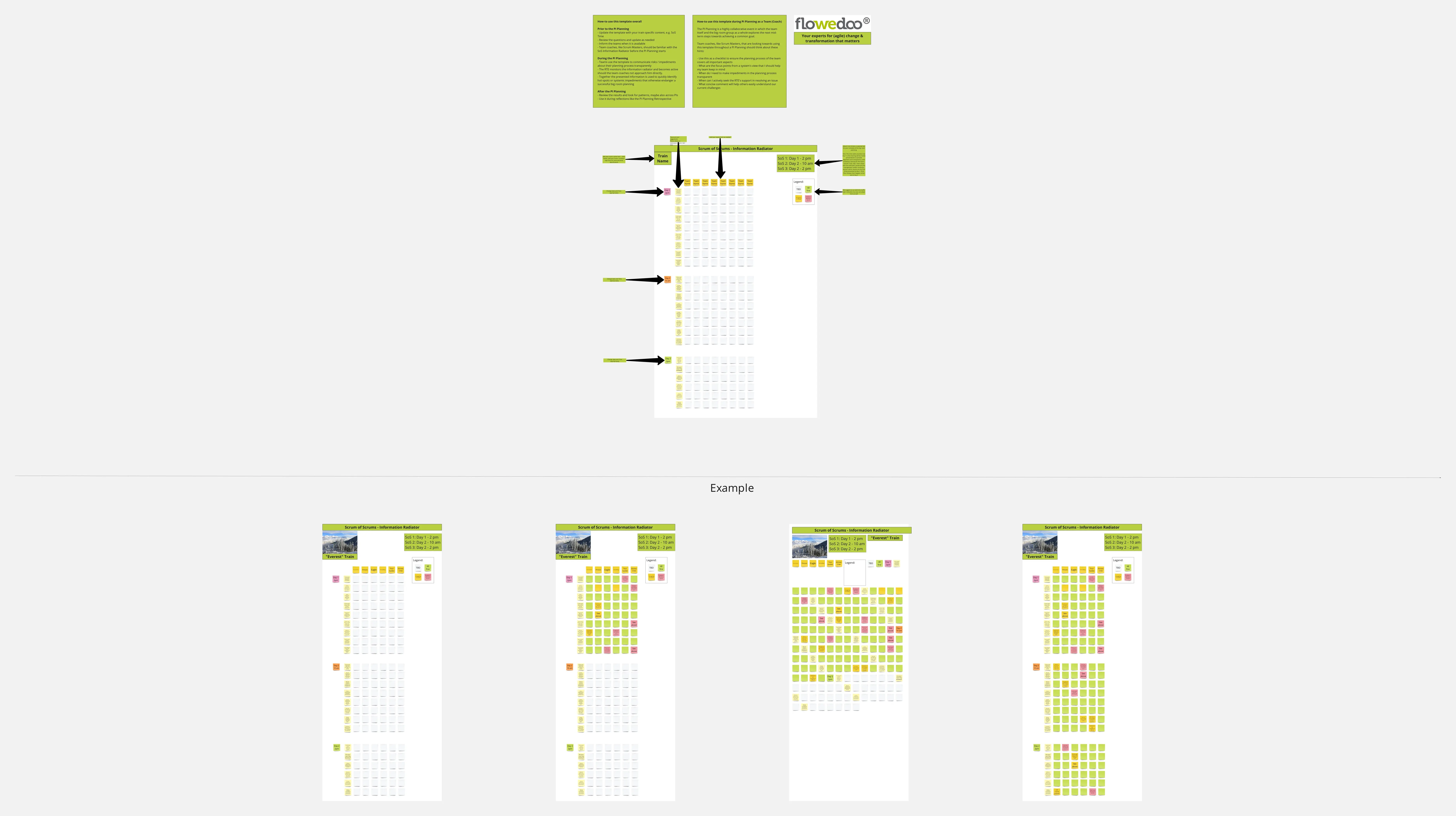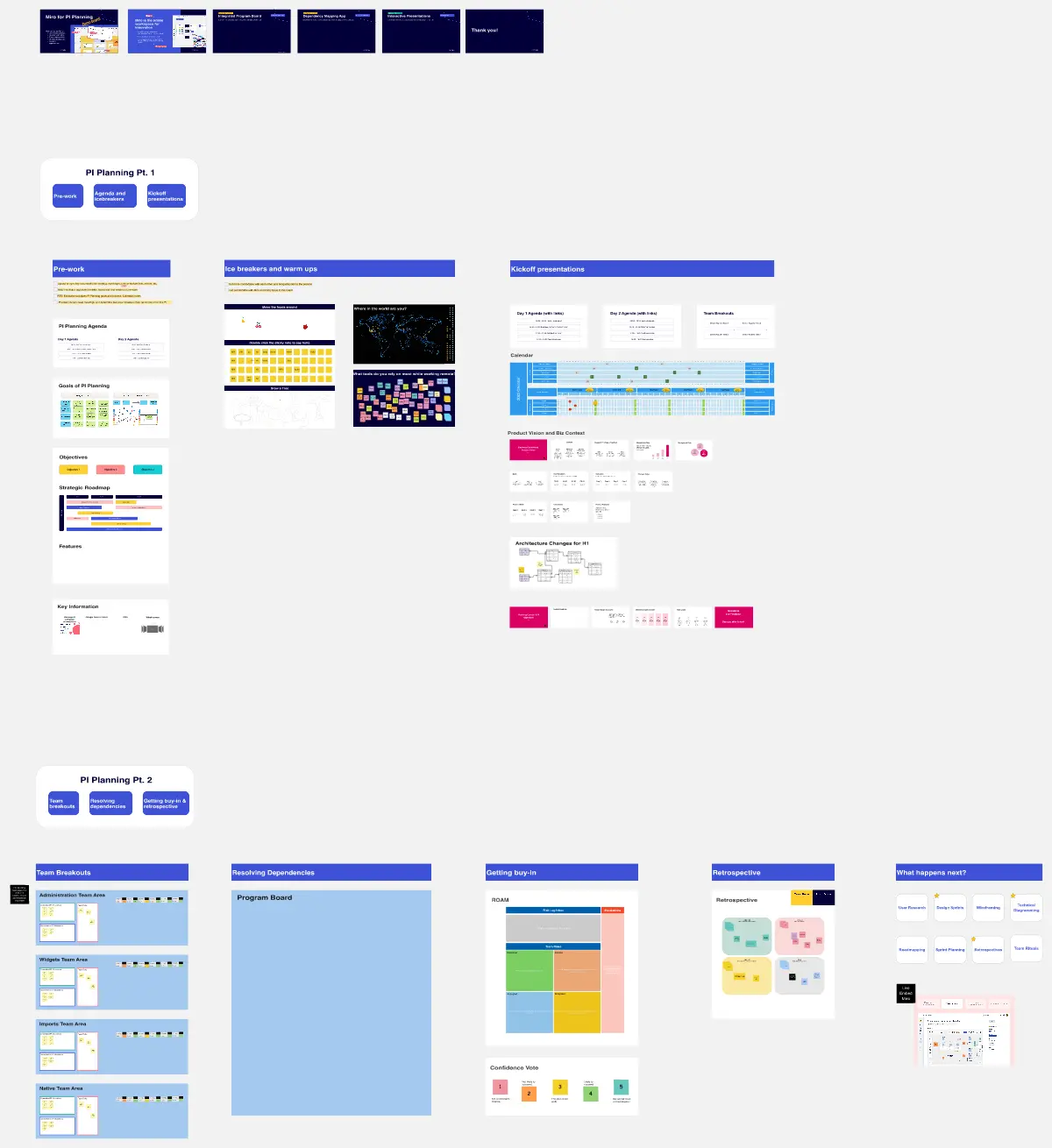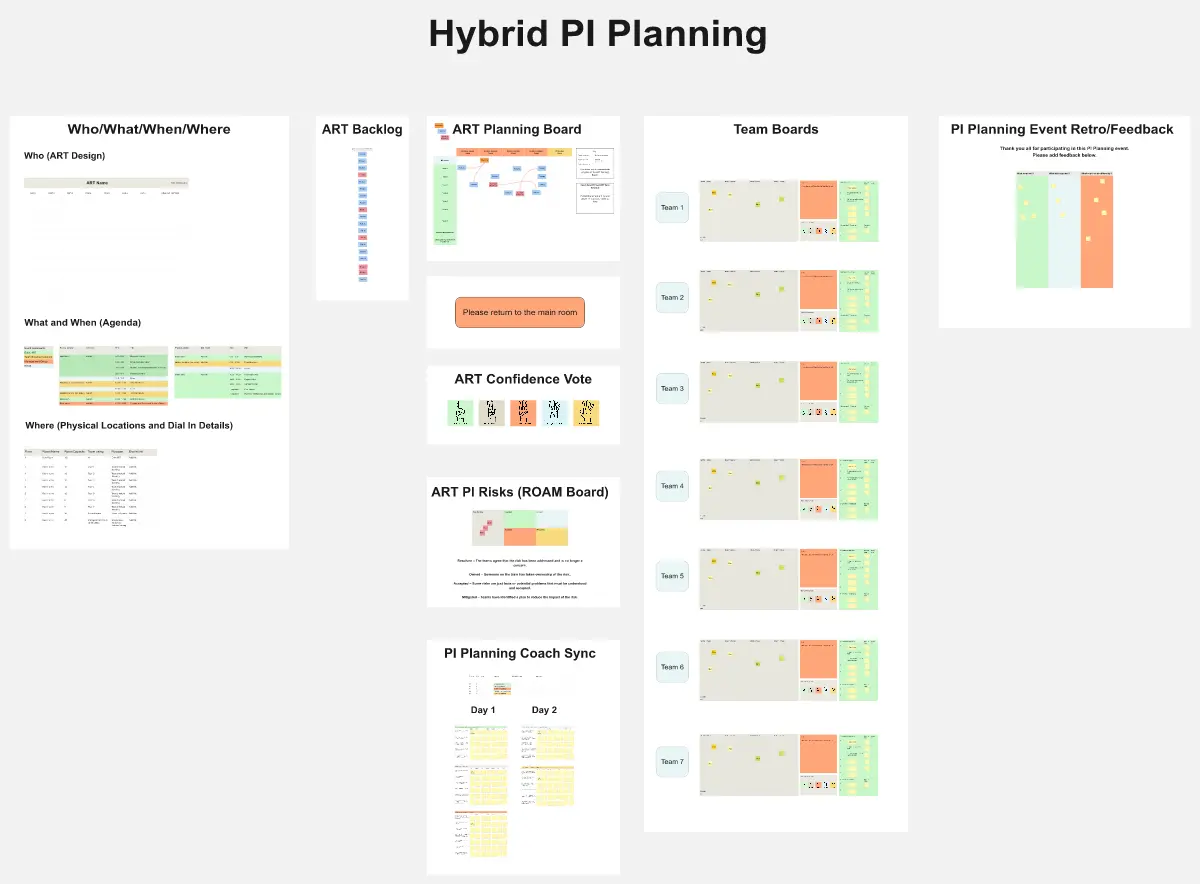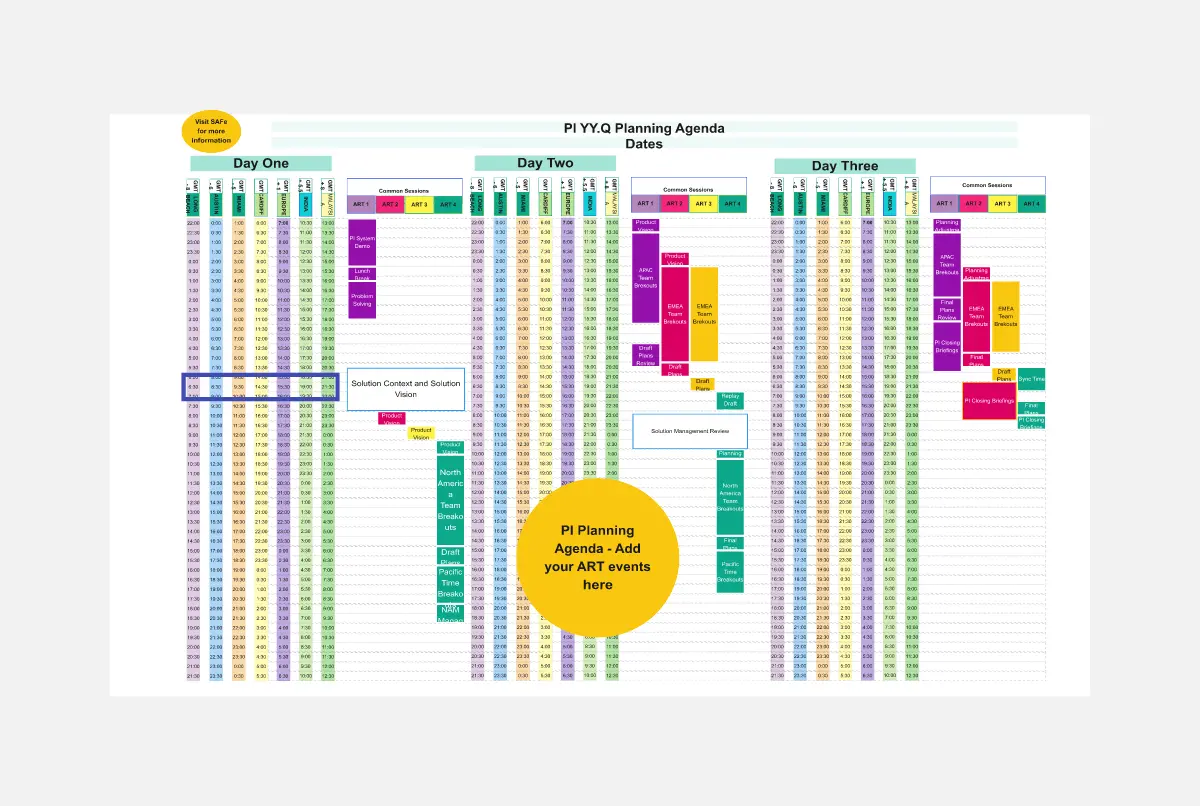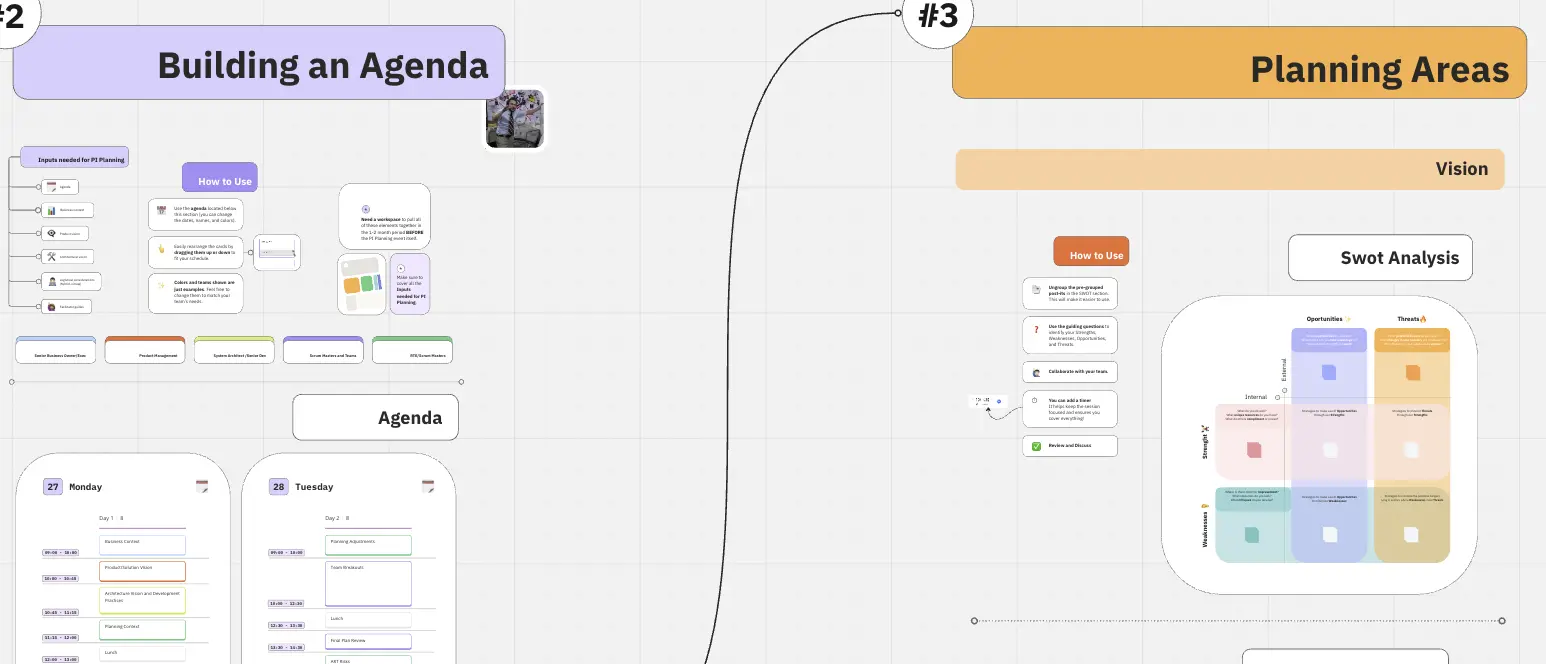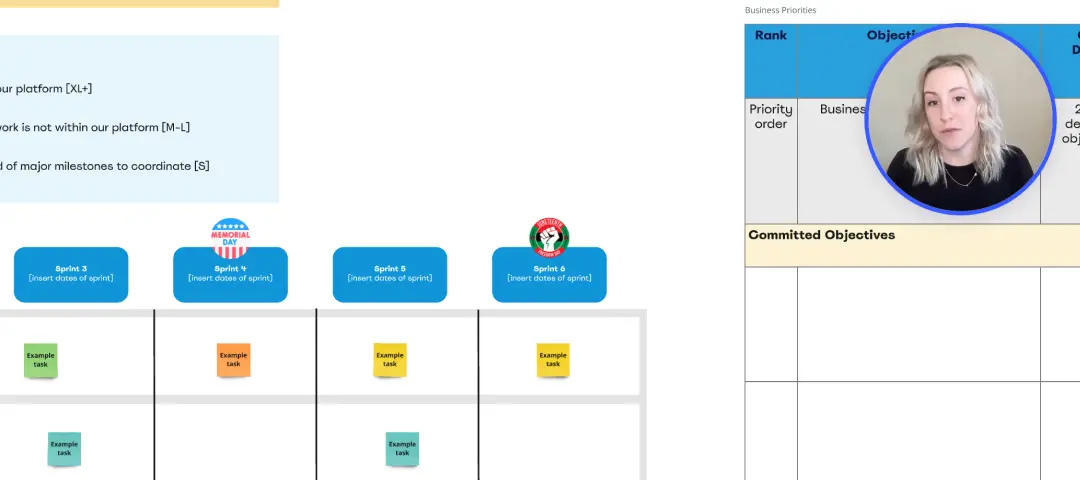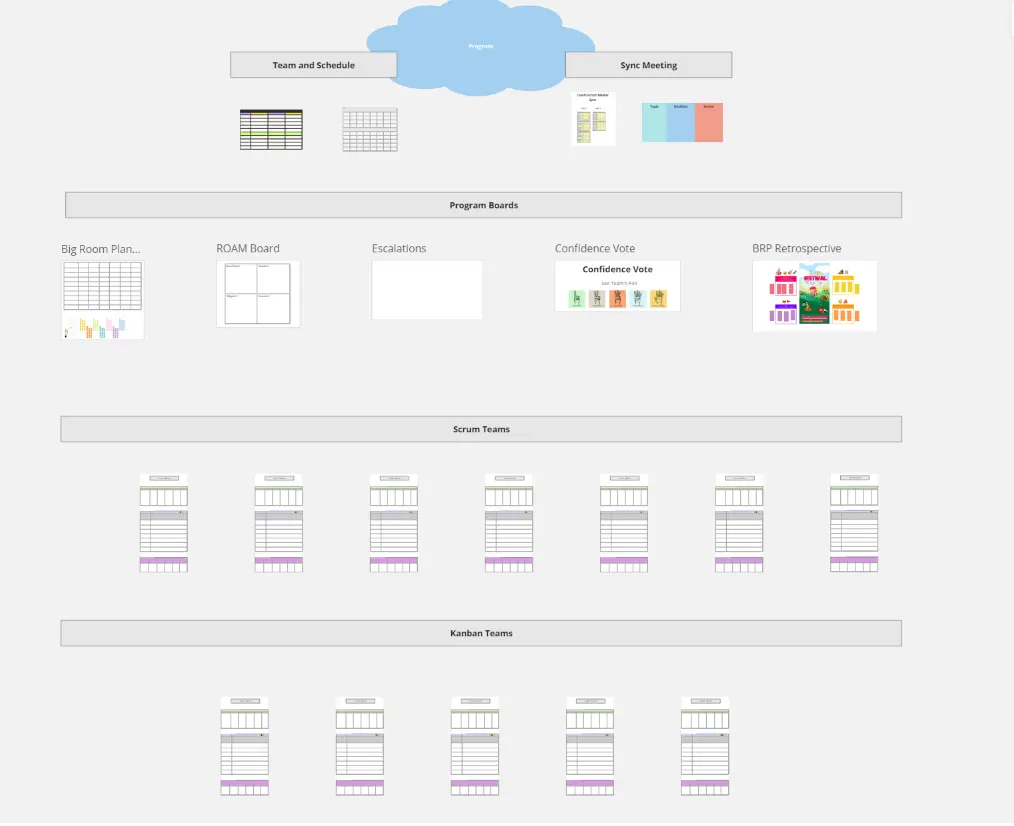PI Planning templates
Miro's PI Planning templates are your go-to solution for organizing productive Program Increment sessions. Streamline alignment, map out objectives, and foster collaboration across teams with intuitive boards that bring everyone together, no matter where they are.
17 templates
SAFe PI Planning
231 likes2.5K uses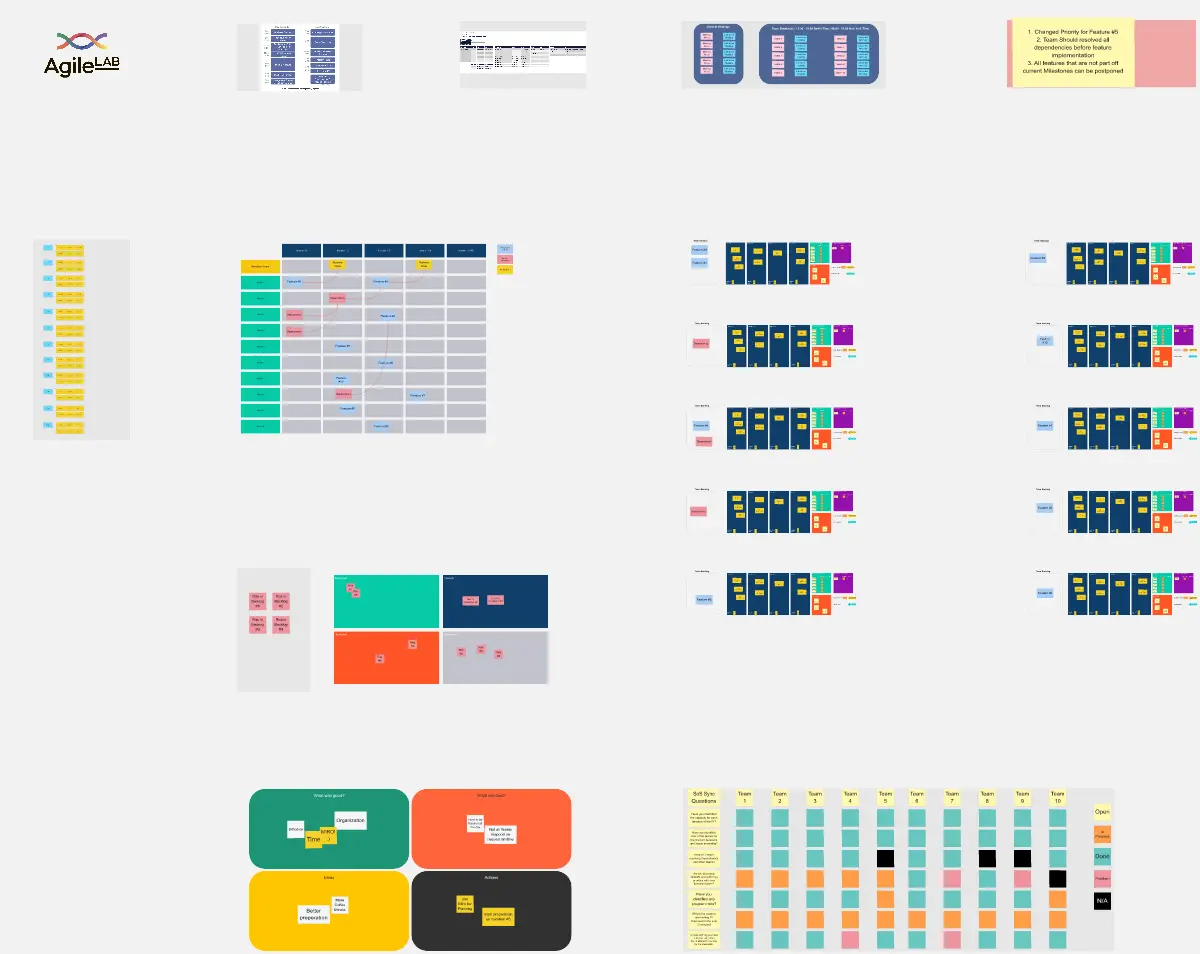
SAFe PI Planning
SAFe PI Planning is a collaborative event for Agile Release Trains to plan and align on program increments. It provides a structured framework for setting objectives, identifying dependencies, and sequencing work. This template facilitates PI Planning sessions, enabling teams to visualize their commitments and coordinate cross-team dependencies effectively. By promoting transparency and alignment, SAFe PI Planning empowers Agile organizations to deliver value at scale with predictability and quality.
All-in-one PI Planning
164 likes1.1K uses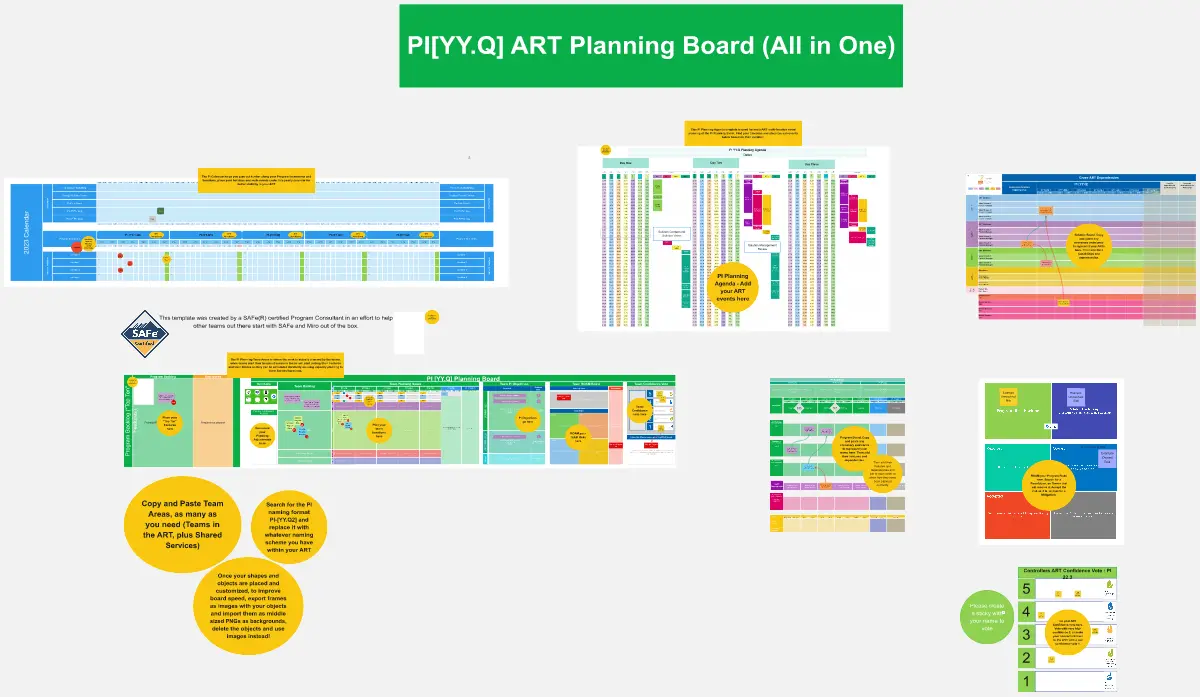
All-in-one PI Planning
The All-in-one PI Planning template streamlines the SAFe Program Increment (PI) Planning process by providing a comprehensive framework for teams to collaboratively plan and align on objectives and dependencies. It integrates essential elements such as PI Objectives, Team Breakouts, and Program Board, enabling teams to visualize, prioritize, and coordinate work effectively. This template empowers Agile Release Trains to deliver value predictably and efficiently, driving alignment and synchronization across the organization.
Scaled Product (PI) Planning
54 likes363 usesPI Planning - Scrum of Scrum Information Radiator
64 likes343 usesPI Planning Demo
50 likes320 usesHybrid PI Planning Board
48 likes314 usesPI Planning Agenda
64 likes249 usesPre-PI Planning
48 likes185 usesSAFe PI Planning
15 likes155 usesPI Planning Template
2 likes57 uses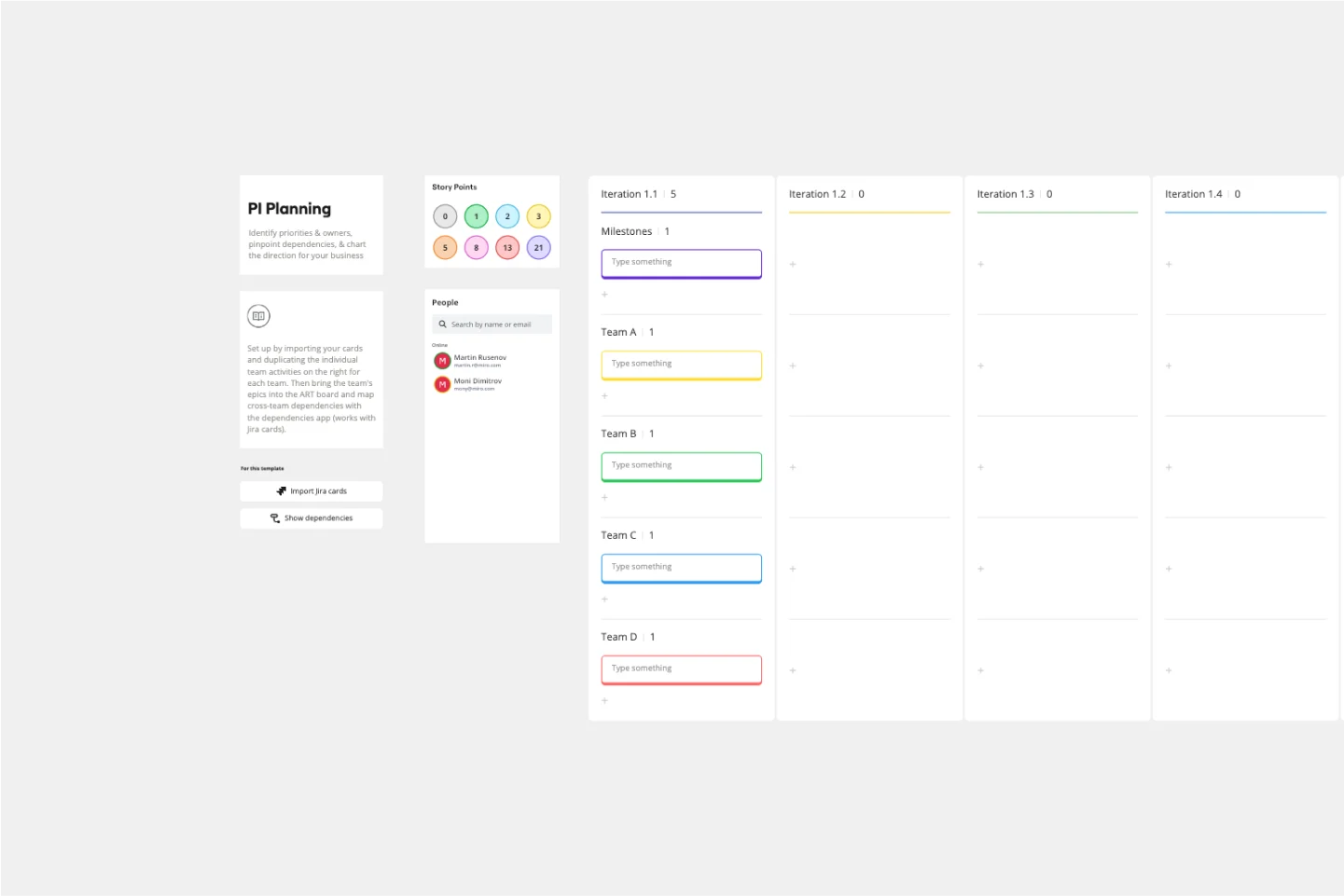
PI Planning Template
PI planning stands for “program increment planning.” Part of a Scaled Agile Framework (SAFe), PI Planning helps teams strategize toward a shared vision. In a typical PI planning session, teams get together to review a program backlog, align cross-functionally, and decide on the next steps. Many teams carry out a PI planning event every 8 to 12 weeks, but you can customize your planning schedule to fit your needs. Use PI planning to break down features, identify risks, find dependencies, and decide which stories you’re going to develop.
PI Planning
8 likes52 usesSAFe Program Board
1 likes37 uses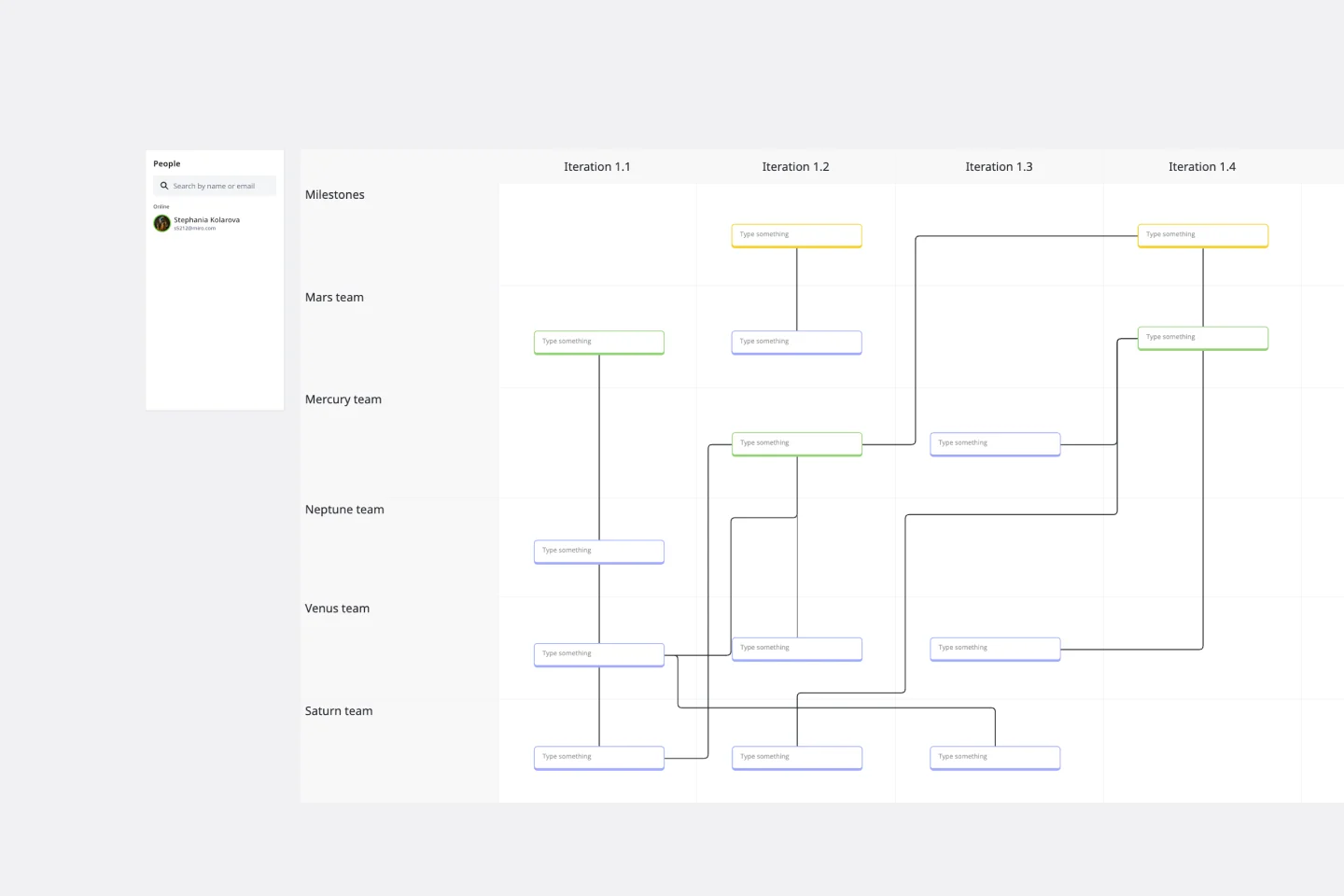
SAFe Program Board
Many organizations use the Agile model, but even companies that don’t rigorously adhere to all Agile standards have adopted Agile tools and methods like Program Increment (PI) Planning. Even if you’re not participating in a formal PI session, a program board can be a great way to establish communication across teams and stakeholders, align development objectives with business goals, clarify dependencies, and foster cross-functional collaboration. The board provides much-needed structure to planning sessions, yet is adaptable enough to accommodate brainstorming and alignment meetings.
Scenario Planning Template
1 likes32 uses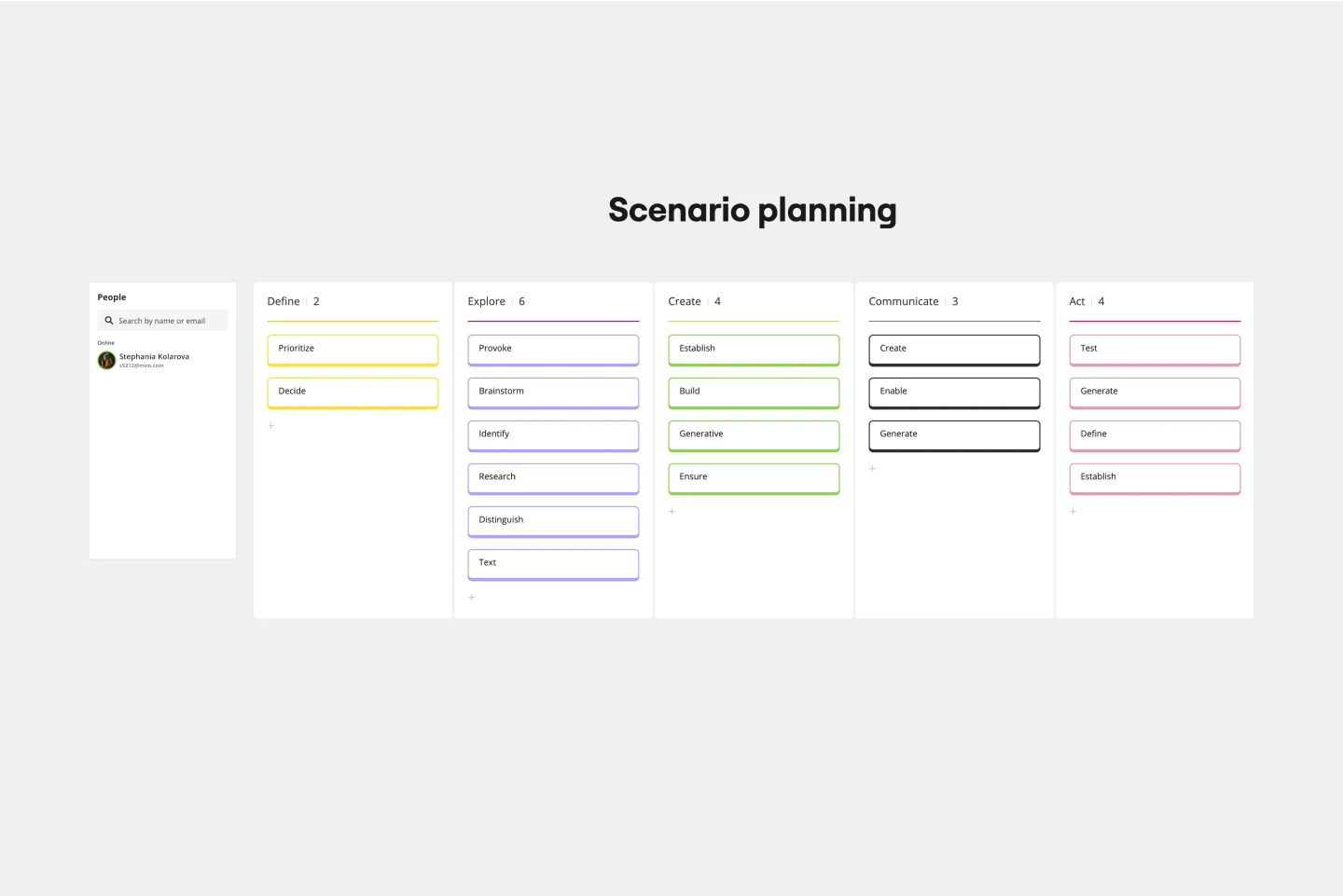
Scenario Planning Template
The Scenario Planning Template simplifies the complex process of strategizing and envisioning various future scenarios. The template’s clear structure helps teams and individuals effectively navigate the multifaceted steps of project planning and execution. A standout benefit of this template is its capability to foster structured thinking. With its distinct sections ranging from definition to action, it ensures that ideas are organized coherently, promoting logical progression and reducing the chances of oversight, making the planning process both efficient and comprehensive.
PI Planning AI Template
1 likes26 uses
AI Accelerated
PI Planning AI Template
PI planning stands for “program increment planning.” Part of a Scaled Agile Framework (SAFe), PI Planning helps teams strategize toward a shared vision. In a typical PI planning session, teams get together to review a program backlog, align cross-functionally, and decide on the next steps. Many teams carry out a PI planning event every 8 to 12 weeks, but you can customize your planning schedule to fit your needs. Use PI planning to break down features, identify risks, find dependencies, and decide which stories you’re going to develop.
PI Planning Template
1 likes15 uses
PI Planning Template
The Miro PI Planning Template streamlines the Program Increment planning process for Agile teams. It facilitates a collaborative environment, enabling teams to efficiently align on strategies, identify dependencies, and convert decisions into actionable tasks. With features like real-time collaboration, Jira integration, and a centralized workspace, the template supports teams in enhancing efficiency, engagement, and decision-making.
PI Planning Preparation SAFe Template
0 likes6 uses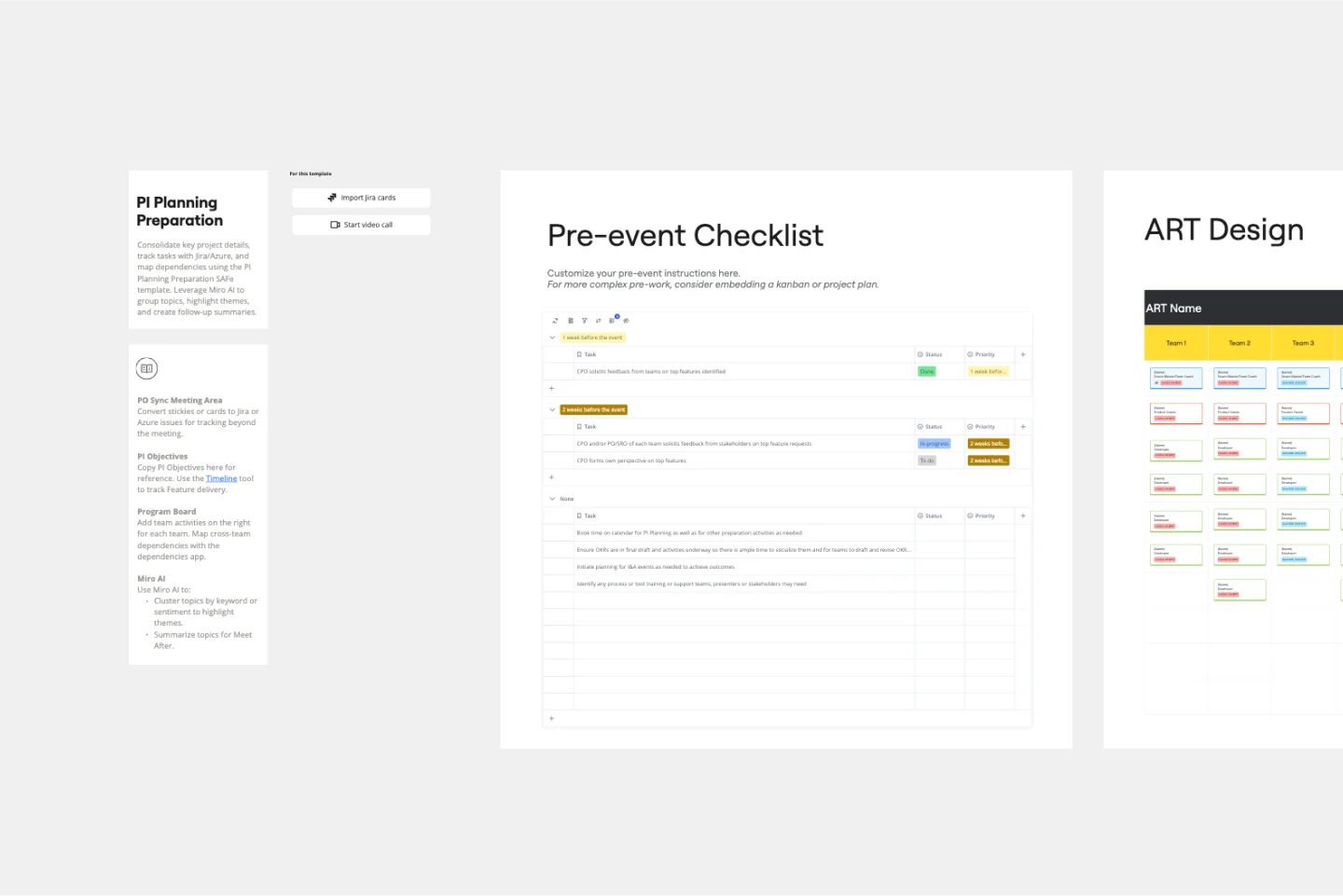
PI Planning Preparation SAFe Template
The PI Planning Preparation SAFe Template in Miro is designed to streamline the preparation process for Program Increment (PI) Planning within the SAFe framework. This template helps teams organize and align their objectives, ensuring a smooth and efficient planning session. It includes sections for gathering feedback, setting up the business context, defining the product vision, and preparing the necessary tools and integrations.
PI Planning Wrap up & Tracker SAFe Template
0 likes1 uses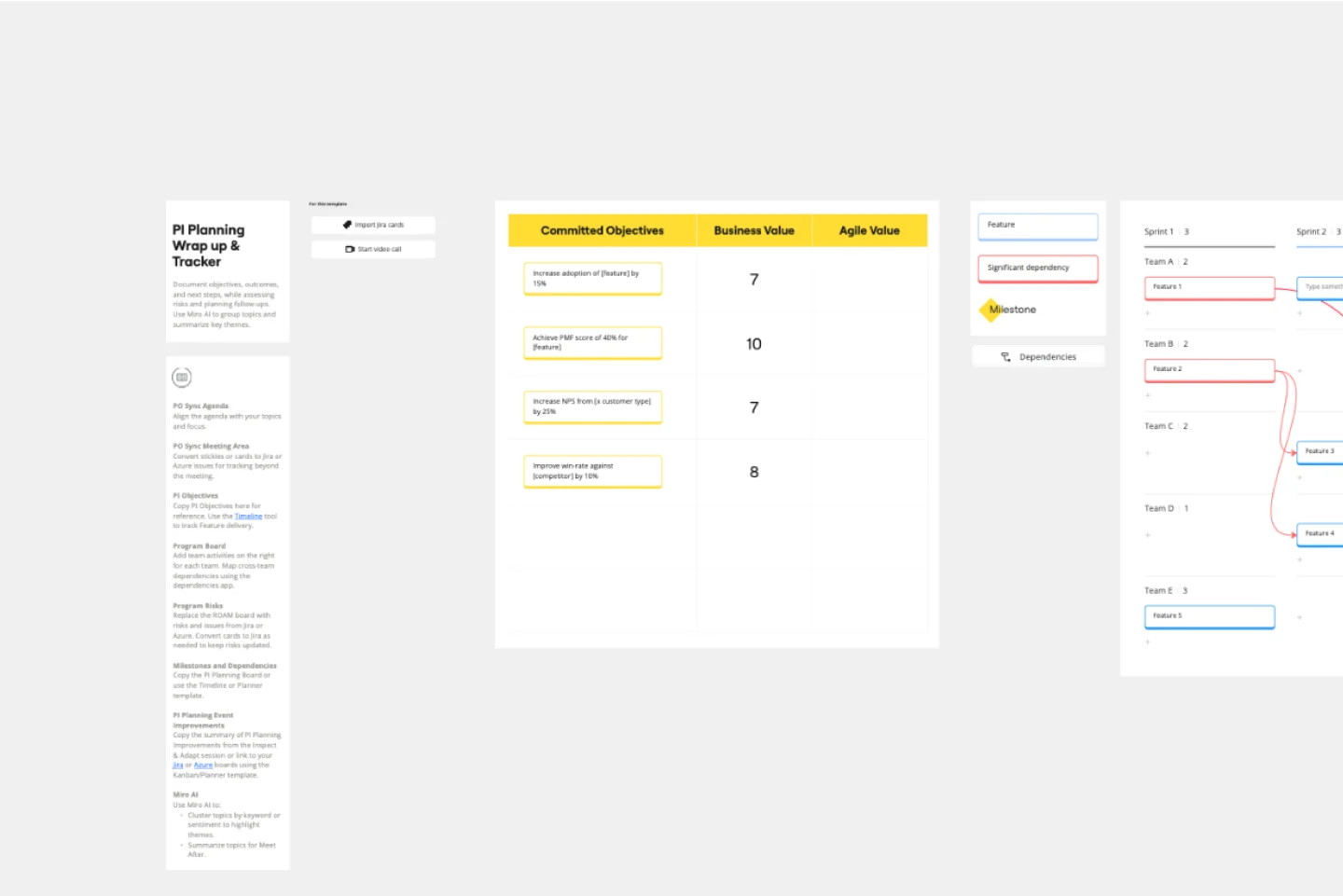
PI Planning Wrap up & Tracker SAFe Template
The PI Planning Wrap up & Tracker SAFe Template is a comprehensive tool designed to streamline the post-PI planning process for teams using the SAFe framework. It helps document objectives, meeting outcomes, and future plans, ensuring all critical information is captured and easily accessible. With integrated Miro AI, users can group topics by keyword or sentiment to identify key themes and create summaries for follow-up discussions. This template is particularly beneficial for product managers who need to efficiently track program risks, dependencies, and next steps.

Explore more
About the PI Planning Templates Collection
Miro's PI planning templates collection streamlines the process of Program Increment (PI) planning, a critical event in the Scaled Agile Framework (SAFe). These templates provide a structured approach to planning, allowing teams to align on objectives, identify dependencies, and set a clear path for the upcoming increment. Whether you're new to PI planning or looking to enhance your current process, Miro's templates offer a comprehensive solution to meet your needs.
Why you'll love our PI planning templates
Using Miro's PI planning templates offers many benefits:
Improved collaboration: Facilitate real-time collaboration among distributed teams, ensuring everyone is on the same page. Visual clarity: Use visual tools to map out dependencies, risks, and objectives, making complex information easier to understand. Efficiency: Streamline the planning process with pre-built templates that reduce setup time and help teams focus on planning. Integration: Seamlessly integrate with tools like Jira and Azure DevOps, ensuring that your planning board stays in sync with your system of record. Flexibility: Customize templates to fit your specific needs, whether you're conducting a face-to-face session or a remote planning event. Engagement: Keep teams engaged with interactive elements and a visually appealing interface.
How to use the PI planning templates in Miro
1. Select the template: Start by choosing a PI planning template from Miro's template library. You can find templates for various aspects of PI planning, including the program board, team breakouts, and risk management.
2. Customize the template: Tailor the template to your specific needs. Add your team's objectives, features, and user stories. Use Miro's drag-and-drop functionality to organize elements on the board.
3. Identify dependencies: Use the dependencies app to map out dependencies between teams and features. This helps in identifying potential bottlenecks and ensuring that all teams are aligned.
4. Plan iterations: Break down the work into iterations. Assign tasks to team members and estimate the effort required for each task. Use Miro's capacity planning tools to ensure that the workload is balanced.
5. Conduct breakout sessions: During the PI planning event, use the template to facilitate breakout sessions. Teams can work on their specific areas, update their plans, and sync with other teams.
6. Review and adjust: After the breakout sessions, bring all teams together to review the overall plan. Make any necessary adjustments based on feedback and ensure that all dependencies and risks are addressed.
7. Finalize the plan: Once the plan is reviewed and adjusted, finish it and share it with all stakeholders. Use Miro's export and sharing features to distribute the plan.
8. Track progress: Throughout the PI, use the template to track progress. Update the board with completed tasks, new risks, and any changes to the plan.
Miro's PI planning templates are designed to help teams succeed within the scaled agile framework by offering a structured, visual, and collaborative approach to planning. Using the safe PI planning template, teams can ensure alignment, identify and mitigate risks, and establish a clear path for achieving their objectives. Miro also has free agile PI planning templates that cater to various project needs, including a blank PI planning board for teams looking to customize their approach. Start using Miro's PI planning templates today to experience a more streamlined and efficient product increment planning process.
